Accepted Scientific Name: Gymnocalycium baldianum Speg.
Anales Soc. Ci. Argent. xcix. 135 (1925)
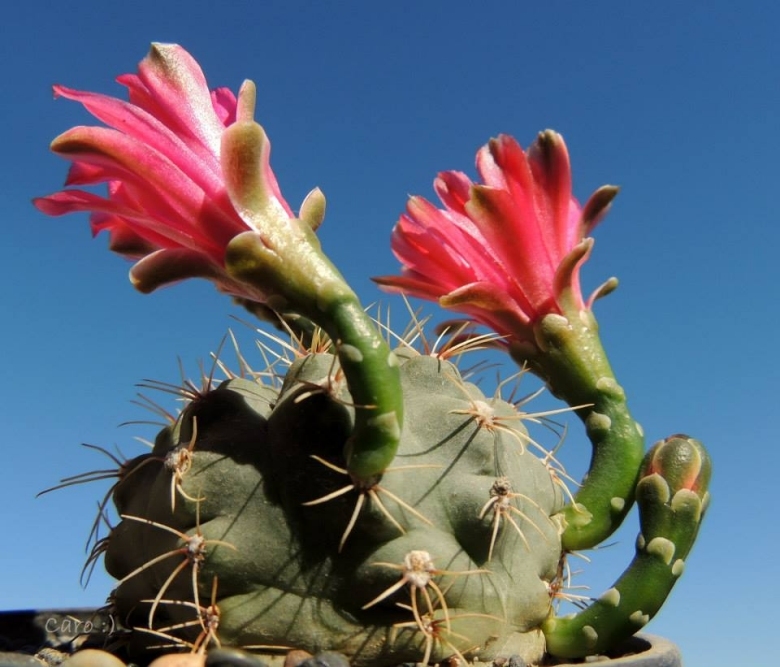
Echinocactus baldianus (Gymnocalycium baldianum) Photo by: Carolina González
Extremely free flowering it makes a splendid show. This is a plant to be suggested to all cactophiles for its very eye-catching flowering even at a very small size. It flowers readily from an early age, and offers no cultivation difficulties.
Origin and Habitat: Argentina, Catamarca Province (Sierra Ancasti, Sierra Graciana, Sierra de Narvaes, Sierra de Guayamba, Sierra de Manchao and on the mountains east of Andalgalá)
Altitude: It grows at elevations of 500 to 2000 metres above sea level.
Habitat and Ecology: This high-altitude plant is often found among grass. Gymnocalycium baldianumSN|11968]]SN|11968]] has a relatively restricted range, has a continuous distribution and is not fragmented. Collection is a major threat for the species in parts of it range also fire affects it in some areas.
Synonyms:
See all synonyms of Gymnocalycium baldianum
back
Accepted name in llifle Database:Gymnocalycium baldianum Speg.Anales Soc. Ci. Argent. xcix. 135 (1925)Synonymy: 9
Cultivars
(1):
back
Common Names include:
ENGLISH: Dwarf chin
Description: Gymnocalycium baldianumSN|11974]]SN|11968]] small usually unbranched.
Stem: Flat to globose depressed, up to 13 cm in width, greyish-brown to blue-green (rather variable in colour in cultivation, and in some specimens it is almost blue-black). The 9 to 10 broad ribs are divided by deep grooves into tubercles.
Areoles: Deep-set
Spines: 5 to 7 thin radial spines that are straight or curved toward the stem, short, curved, pale brown or grey, tinged with red at the base.
Flowers: on the crown, measuring 3 to 4 cm in length and the same across, open wide in sunlight, and commonly of a most rich purple-red colour, sometimes pinkish-purple (but also white, pink or orange). The stamens are purple, the anthers and the 6 lobed stigma whitish yellow. This plant blooms in early summer when it is only 2.5 cm. It is fast growing and can bloom one year after being sown.
Fruits: The ripened ovary is green, long and dehisces (splits) down its length.
Remarks: The synonym name Gymnocalycium venturianumSN|11968]]SN|11974]] is very common in collections, and even at cactus nurseries. It is a very variable species in its general appearance. There are also many hybrids with a wide range of flower colours.
Subspecies, varieties, forms and cultivars of plants belonging to the Gymnocalycium baldianum group
Notes: It is one of the hybridparent of: Gymnocalycium × pazoutianum Halda Acta Mus. Richnov., Sect. Nat. 5(4): 164 (1998).
Bibliography: Major references and further lectures
1) Edward F. Anderson “The Cactus Family” Timber Press, 2001
2) Curt Backeberg “Cactus Lexicon” Sterling Publishing Company, Incorporated, 1978
3) David Hunt, Nigel Taylor “The New Cactus Lexicon” DH Books, 2006
4) James Cullen, Sabina G. Knees, H. Suzanne Cubey “The European Garden Flora Flowering Plants: A Manual for the Identification of Plants Cultivated in Europe, Both Out-of-Doors and Under Glass” Cambridge University Press, 11/Aug./2011
5) Perea, M. & Trevisson, M. 2013. Gymnocalycium baldianum. In: IUCN 2013. "IUCN Red List of Threatened Species." Version 2013.2. <www.iucnredlist.org>. Downloaded on 25 February 2014.
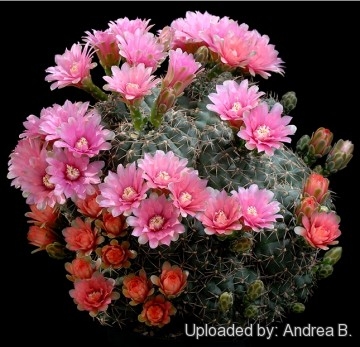 Echinocactus baldianus (Gymnocalycium baldianum) Photo by: Andrea B.
Echinocactus baldianus (Gymnocalycium baldianum) Photo by: Andrea B.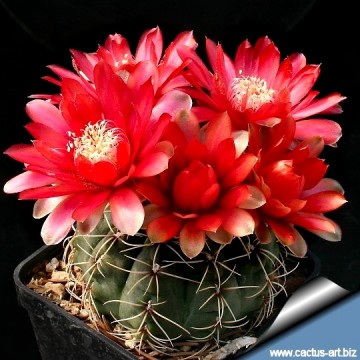 Echinocactus baldianus (Gymnocalycium baldianum) Photo by: Cactus Art
Echinocactus baldianus (Gymnocalycium baldianum) Photo by: Cactus Art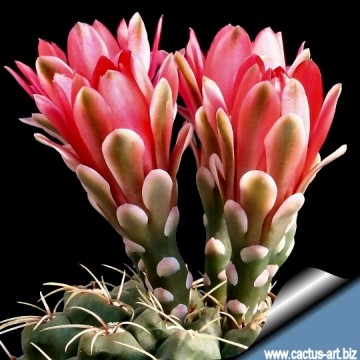 Echinocactus baldianus (Gymnocalycium baldianum) Photo by: Cactus Art
Echinocactus baldianus (Gymnocalycium baldianum) Photo by: Cactus Art Echinocactus baldianus (Gymnocalycium baldianum) Photo by: Carolina González
Echinocactus baldianus (Gymnocalycium baldianum) Photo by: Carolina González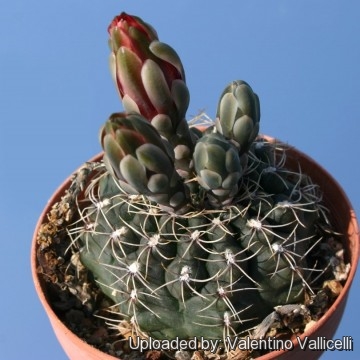 Echinocactus baldianus (Gymnocalycium baldianum) Photo by: Valentino Vallicelli
Echinocactus baldianus (Gymnocalycium baldianum) Photo by: Valentino Vallicelli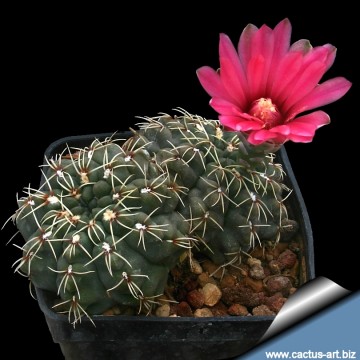 Echinocactus baldianus (Gymnocalycium baldianum) Photo by: Cactus Art
Echinocactus baldianus (Gymnocalycium baldianum) Photo by: Cactus Art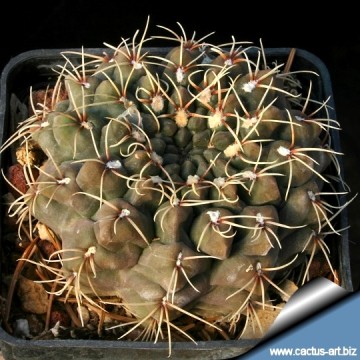 Echinocactus baldianus (Gymnocalycium baldianum) Photo by: Cactus Art
Echinocactus baldianus (Gymnocalycium baldianum) Photo by: Cactus Art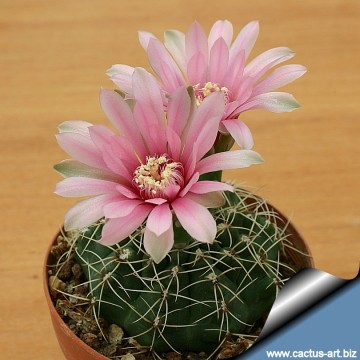 Echinocactus baldianus (Gymnocalycium baldianum) Photo by: Cactus Art
Echinocactus baldianus (Gymnocalycium baldianum) Photo by: Cactus ArtCultivation and Propagation: Gymnocalycium baldianumSN|11968]]SN|11968]] is very easy to grow, these plants offer no cultivation difficulties.
Watering Needs: Moderate to copious in summer, keep dry in winter.
Frost Tolerance: Quite frost resistant if kept dry -10° C (Temperature Zone: USDA 8-10 )
Cultural Practices: Feed with a high potassium fertilizer in summer.
Sun Exposure: Full sun to light shade.
Propagation: Seeds (seldom produces offsets).
Your Photos

by Carolina González
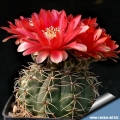
by Cactus Art
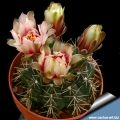
by Cactus Art





















